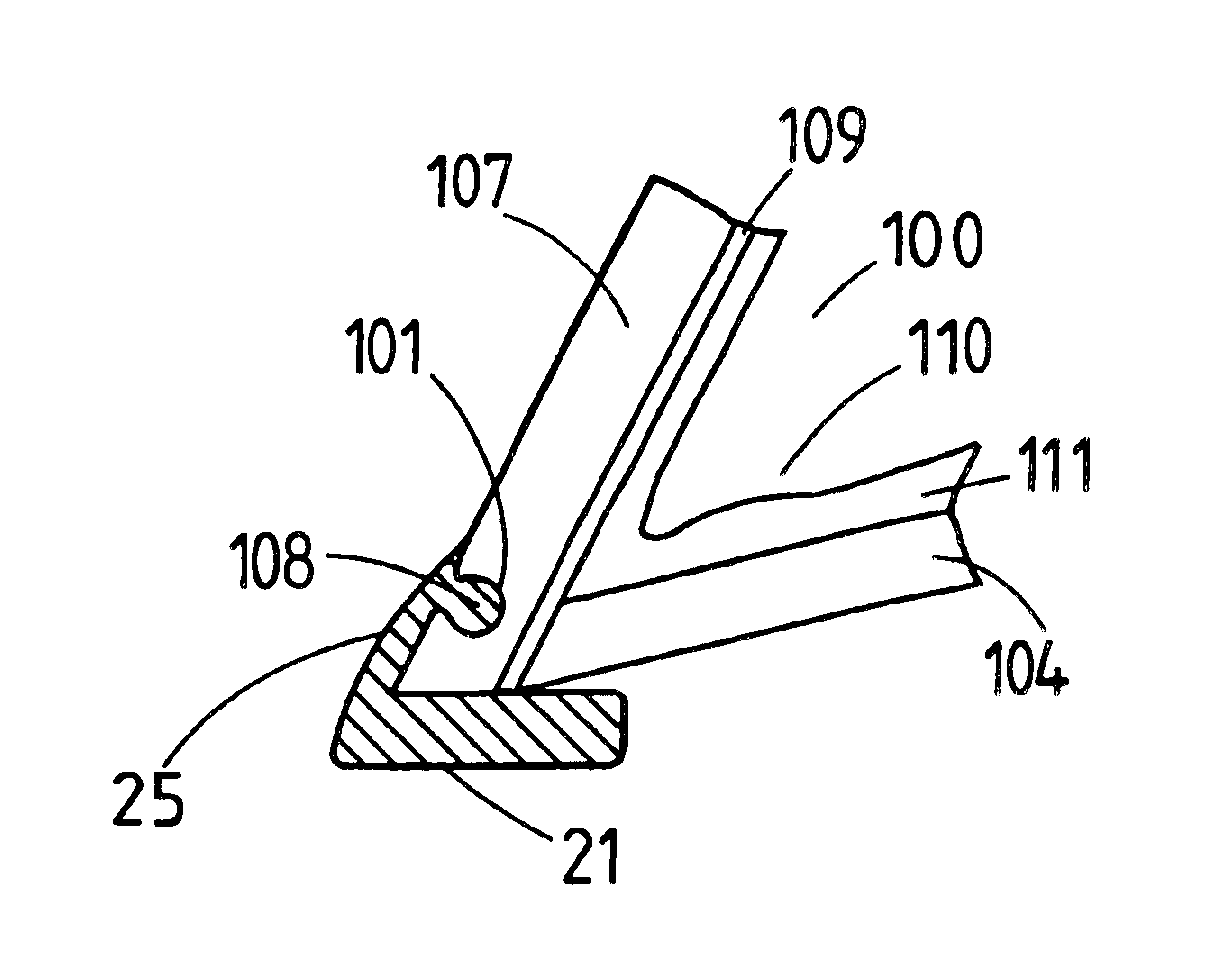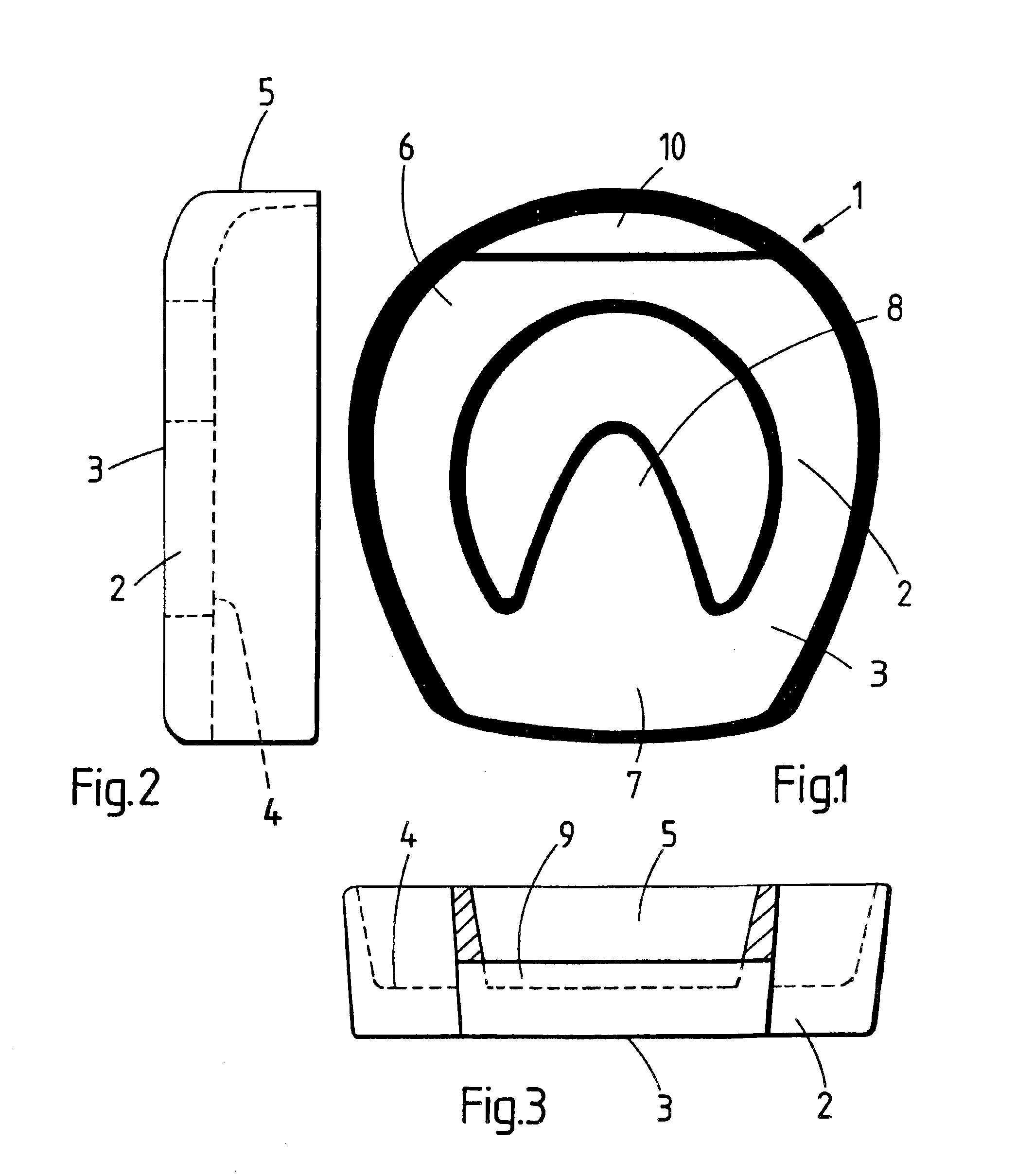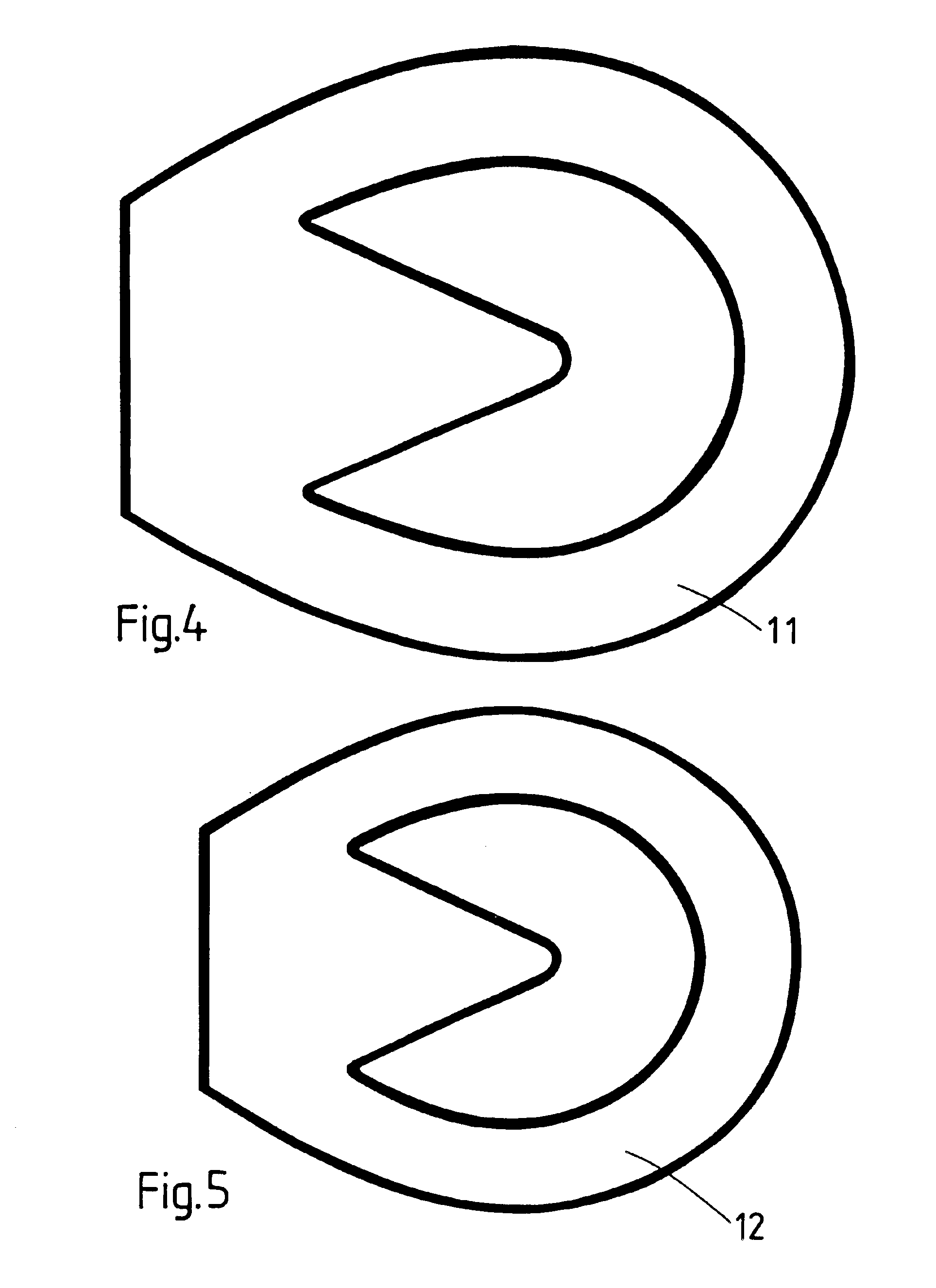Shoe and shoeing method
a technology for hoofed animals and shoes, applied in the field of shoes for hoofed animals, can solve the problems of exacerbated problems, difficult to achieve the effect of preformed horseshoes, and difficulty in cutting shoes to shape or use chemicals with undesirable side effects, etc., to achieve the effect of easy application, convenient shaping and easy formation
- Summary
- Abstract
- Description
- Claims
- Application Information
AI Technical Summary
Benefits of technology
Problems solved by technology
Method used
Image
Examples
Embodiment Construction
Referring to FIGS. 1 to 3 of the drawings, a horseshoe 1 of the heartbar type is moulded in one piece from CAPA® 650 polycaprolactone, which is available from Solvay Interox Limited, Baronet Road, Warrington, Cheshire WA4 6HB, United Kingdom. It can be made from the polycaprolactone by any suitable technique. As examples of moulding techniques there can be mentioned casting and injection moulding. It is also possible to heat polycaprolactone granules in a vessel containing water until the granules coalesce to form a gel, to mould the resulting gel with the fingers into a sausage-like shape, to place the sausage-like shape in a female part of a mould, and then to close the mould with a male member and apply a weight to the male member to cause the material of the sausage-like shape to conform to the shape of the mould cavity. The length of horseshoe 1 is about 125 mm and its breadth is about 105 mm.
The horseshoe 1 comprises a body 2 having a lower ground-contacting surface 3 and an u...
PUM
 Login to View More
Login to View More Abstract
Description
Claims
Application Information
 Login to View More
Login to View More - R&D
- Intellectual Property
- Life Sciences
- Materials
- Tech Scout
- Unparalleled Data Quality
- Higher Quality Content
- 60% Fewer Hallucinations
Browse by: Latest US Patents, China's latest patents, Technical Efficacy Thesaurus, Application Domain, Technology Topic, Popular Technical Reports.
© 2025 PatSnap. All rights reserved.Legal|Privacy policy|Modern Slavery Act Transparency Statement|Sitemap|About US| Contact US: help@patsnap.com



